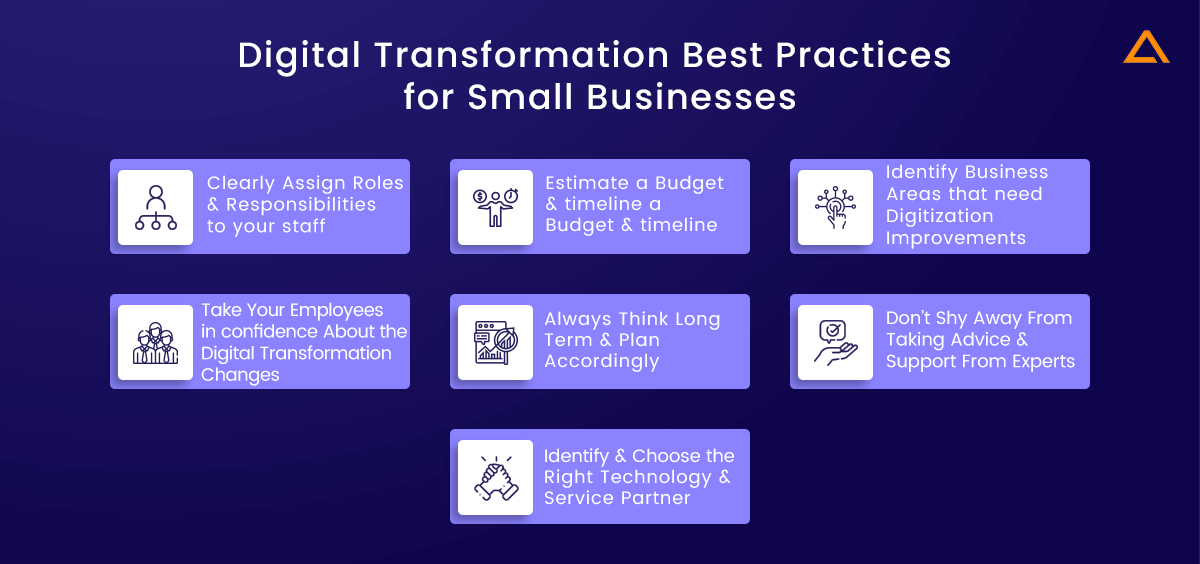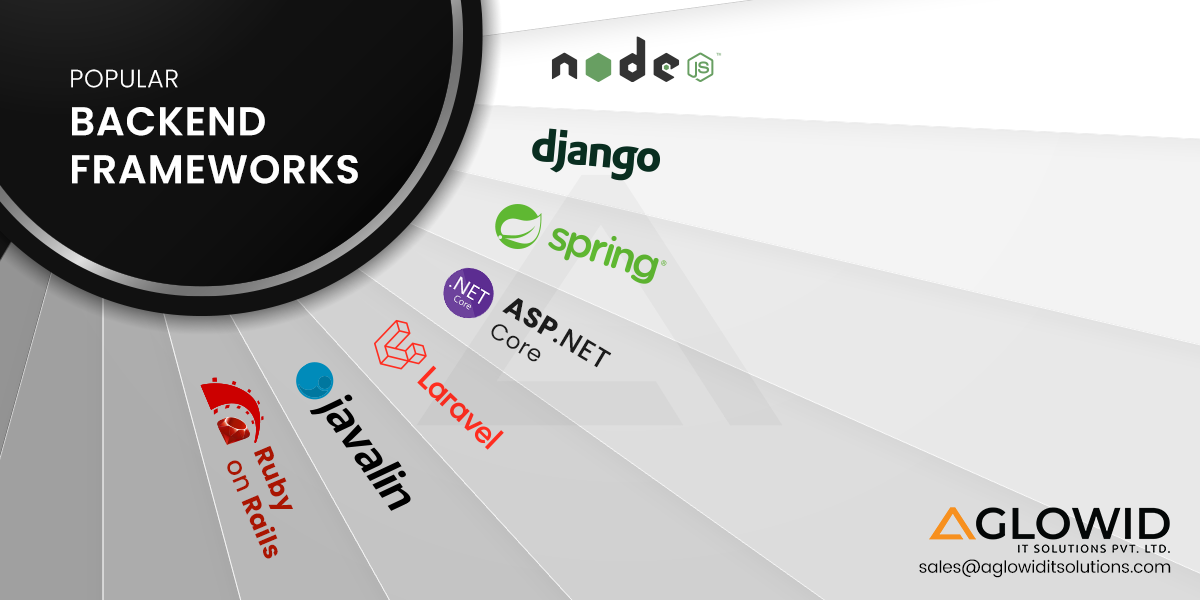Quick Summary:
Digitizing your business has become a necessity more than an option. Even if this is true, there is no reason to fret digital transformation for small business because we have answers to all your queries, doubts, and hiccups about why digital transformation is essential and how to transition without it causing any losses to your existing business.
If you are reading this blog, chances are you are a small business looking to digitize your small business or are on the fence about deciding to do so. You might have come to this conclusion based on your growing business needs and reaching more customers, or you would have seen/heard other traditional small businesses discussing the need for post-pandemic digital business transformation.
As per a study conducted by Statista, it is evident that most small businesses were negatively affected by the pandemic. Whatever the reason, you can rest assured that the digital transformation journey, if planned thoroughly and implemented perfectly, is not overwhelming; instead, digital transformation benefits your small business.
Decoding the Three Pillars of Digital Transformation
Most digital transformation strategies fail these days, and this is because most small businesses are not taking their time to understand what digital transformation truly means and are implementing half-cooked digital transformation solutions that are only harming their business than being beneficial. To ensure your digital transformation effort doesn’t go in vain and you have an efficient strategy to digitize your business, make sure you understand and implement these three pillars in your overall digital transformation strategy.

1. Make Digital Transformation a two-way process
Digital Transformation is not a simple switch that would work instantly, like how you would toggle a switch to turn lights on or off. A true digital transformation process for small businesses requires time, patience, and, most importantly, two-way participation. Implement ground-level changes to test the waters first and collect your employees’ feedback on how the process feels to them, the limitations or challenges they are facing, and if they think it is helping them in any positive way to go about their work.
Asking these questions and learning from the answers will be insightful and beneficial in making better decisions and overcoming the digital transformation challenges.
2. Start your IT Digital Transformation through HR
To successfully implement digital transformation for your small business, you need strong collaboration between your IT and HR departments. A proper digital transformation is only possible when people and technology transform together. You need to break the barriers between different small business departments and collaboratively plan and execute new initiatives. Learn and perfect your people and technical skills to be a true digital transformation leader.
3. Give your employees real-time software training
One of the most effective and frequently used methods to digitally transform small businesses is SaaS – System as a Software solution. Many businesses keep investing in different software but do not nearly get half of its worth in terms of revenue and work potential as they actually can. Why? They use outdated methods to train their employees that do not help them transition.
Most employees lose the memory of the training provided to them about any software in the first 24 hours after the session gets over. By the time and speed that apps are updated, customized, and revamped these days, the traditional onboarding process does not serve any purpose and proves to be inefficient. Employees should get answers for their queries as and when they have them. Hence, you need to implement a faster and more efficient onboarding process. You should leverage a digital adoption solution that provides tailored guidance to employees from the app when they use it.
Digital Transformation Challenges faced by Small Businesses.
Digital Transformation brings a paradigm shift in your business processes and efficiency. Hence, it is only to be expected for some hurdles that can hinder the digital transformation transition. If you are wondering what are the barriers to rapid digital transformation, here are some of them –

1. Lack of specialized IT Skills
Enabling your small business digitally without a dedicated IT team is next to impossible. Does this mean non-technical companies should shut their doors at the chance of joining the digital transformation? Of course not.
Here are some workarounds to this challenge:
Look within the company
If you are on a limited budget and don’t want to invest in new resources, see if there are any potential talents in the company that can be further polished to help drive the digital transformation of your small business. Here it is important not to limit the potential of any contributor based on their hierarchical position in the company and assuming different roles while shifting from traditional business practices to digital business practices. Having experience and knowledgeable about the workings and ethics of the business will make it easier and more efficient for such employees to lead your small business to a successful digital transformation journey.
OR
Hire dedicated IT experts
So you identified a few talents that can handle some of the transformation tasks for you, but you believe you could still use an expert or two? Well, get those specialized talents from an offshore talent company that has an impressive team of dedicated experts that can work with your in-house team remotely and guide you through some of the important decisions. Alternatively, you can also outsource the digital transformation process to a specialized digital transformation company that can provide on-site training to your employees for a dedicated duration, which would help your employees grasp the concepts faster and better.
2. Undefined or Loosely Defined Digital Transformation Strategy
‘Digital Transformation’ often ends up being overly used buzzwords that get tossed around without any clear understanding of the concept. Start by asking and figuring out what digital transformation is? Moreover, how does it affect my small business? If you dive into the process of digitizing your small business with no plan or strategy, you will most certainly hit a dead end and fail.
Here are some workarounds to this challenge: Ask yourself questions like:
- What are my company’s priorities and goals?
- Are all my stakeholders on page with my vision and mission of the company?
- How will different stakeholders react to this decision of digital transformation?
- What are the pain points and possible challenges I should be prepared for?
3. Budget Constrains and Concerns
One of the most common and important challenges any small business faces when becoming a part of the digital transformation revolution is not having a clear-cut budget plan or sticking to the budget plan for welcoming this change.
Here are some workarounds to this challenge:
Do not plan your budget as per your short-term goals. Plan and estimate your overall long-term goals and plan your budget estimates accordingly. You will need to thoroughly research and understand the digital solutions you implement and be mindful of the culture you are integrating them into.
4. Maintaining proper security levels
Security is one of the most critical aspects for any business – small, medium, or enterprise. Your employees and customers trust you with their personal and sensitive data and, in return, expect you to safeguard it to the best of your ability. While digital transformation brings many perks to a business, an unsuccessful implemented process leaves the business data vulnerable to cyber threats and security issues.
Here are some workarounds to this challenge:
Opt for Cloud Migration
Cloud solutions are one of the most important tools in enhancing the security levels and smoothening the digital transformation process for small businesses. It is more beneficial to companies whose software systems need to be unified digital transformation platforms. To ensure that you successfully implement cloud-computing technologies in your business processes, you can rely on some of the top cloud computing service companies with previous experience in helping companies make this transition efficiently.
Remove Silos & Conduct Audits
Securing your digital assets entirely should be of utmost priority. Your traditional security implementations generally will not suffice or match up with the modern security threats as their legacy architectures are designed for only some specific and limited compliance and governance initiatives. Hence to keep up with the times and new necessary regulations like GDPR, you need to maintain a delicate balance between compliance and access. Hence, you need to check who has access to what information and keep auditing these permissions to safeguard and ensure the protection of digital assets and privileged information.
Communicate the importance of security to the executives
Implementing a secured digital transformation is a collaborative effort across the entire organization. You need to consider all departments and employees with different daily tasks and the level of access or permissions they need to carry out their job smoothly. Hence having a strong executive support system is crucial to overcome any frictions and resistance in the digital transformation process. Take your executives in confidence and explain the importance of security measures rather than scaring them or imposing it on them.
How to Build a Digital Transformation Roadmap?
To successfully implement digital transformation for your small business, you need to follow a systematic, logical, and holistic digital transformation strategy. This strategic plan can be considered a high-level document outlining all your digital initiatives and business objectives. Here is a step-by-step digital transformation roadmap plan that you can follow:

1. Assess your business capabilities
You cannot move forward if you don’t know where you stand. The same stands true for successfully implementing your digital transformation process. You need to first begin by conducting a detailed assessment of your current strengths, weaknesses, limitations, and opportunities. Assess important metrics like your KPIs, strategic goals, and potential growth opportunities.
2. Study your competitors and industry
While digital transformation is an internal business practice, it is always helpful to look outside and observe what other businesses that are transitioning through the same phase in your industry are doing and what results in its yielding them. You also need to know how your efforts compare to theirs. A competitive analysis will give you important insights about the latest tools and technologies being used in the industry, the best solutions in the market, and more.
3. Assign Priorities to your digital initiatives
A complete digital transformation will consist of many small or stand-alone digital initiatives across your business processes. They will be different in their potential, resources needed, and ROI. Hence, you need to prioritize the digital initiatives as per your business requirements. A good idea is to start with basic projects with essential features to check the viability of your digital solutions before moving forward.
4. Come up with a delivery plan
After prioritizing the digital initiatives as per their importance, you need to create a digital transformation roadmap for each initiative that includes important details like resource requirements, metrics for measuring results, and more. Having a delivery plan before starting the development and delivery phase will save you a lot of headaches and hassles, making the process a lot smoother.
5. Set your budget estimates
As we already discussed earlier, budget is where most small businesses suffer the most due to inadequate planning or not considering long-term goals when coming up with their digital transformation budget. Make sure to consider all aspects like digital transformation technologies you might need to use, keep a buffer for uncertainties and anticipated delays, so you have a safety net moving forward.
6. Plan your resources
Technology is not the only cost consideration you need to keep in mind. It is crucial to have a team of the right people with the right skills and mindset to convert your strategy into action.
Key Business Areas to Implement Digital Transformation for Small Businesses
For any small business looking to embark on a digital transformation journey, there are four key areas to focus digital transformation best practices at:

1. Process Transformation
To adopt digital transformation, companies often need to undergo a process transformation, modifying and tweaking business process elements so that they align better with the new business goals. Not all companies need to set up a process transformation, but most companies need this radical update to better accustom themselves to the possibilities and opportunities of digitizing their business. A successful business process transformation will help modernize your organization processes, allow you to utilize the latest technologies, improve the efficiency of core functions and save considerable money.
2. Business Model Transformation
This probably speaks to most small businesses out there that are looking to include digital transformation in their business plan. Many businesses are attempting to transform their traditional business model to a more modern and relevant business model through digitizing their business. Many popular companies have adapted such changes successfully, improvising CX (Customer Experience) by leaps and bounds. Netflix reinvented video distribution, Apple reinvented music services, and Uber reinvented the taxi industry. They brought such big and radical changes to their industry that they became leaders by example for other competitors to adopt such transformation to stay relevant in the market.
3. Cultural Transformation
If you could achieve digital transformation by updating your software and technologies, it would not be that difficult or radical change. Most companies fail to implement a successful digital transformation strategy only because they do not understand the importance of aligning their digital transformation practices with their core values and behaviour, hurting the organizational culture.
You need to find a way to accept digital transformation with the possible shift in work behaviour and culture it might bring to your business. For that, you need to take all your stakeholders in confidence to be sure everyone is on the same page.
A digital culture prioritizes:
- Delegation over control
- Boldness over caution
- Planned actions over only planning
- Collaboration over individual contributions
4. Domain Transformation
Domain Transformation is not something small businesses actively pursue, but it is still an important concept to know and aim for in the future. This concept gained significant attention when Amazon, the online retail giant, ventured into a new domain by introducing Amazon Web Services (AWS) – the largest cloud computing infrastructure service provider. This move brought various AWS Cloud Consulting Company into the limelight, placing them alongside other prominent cloud computing firms like Microsoft Azure and IBM. Hence, you can potentially diversify your business into various domains by leveraging the right technologies, meticulous planning, and a well-executed digital transformation strategy.
Key Considerations while implementing Digital Transformation for your Small Business

There are specific key considerations of implementing digital transformation for any small business that one needs to keep in mind to ensure they don’t deviate from the core benefits and reasons of implementing digital transformation in their workspace. Keeping these considerations in mind will help you smoothen your digital transformation journey and build a practical digital transformation roadmap.
1. Digital Transformation Customer Experience
Like any other business practice, your digital transformation effort needs to be first and foremost about your customers. Your digital transformation purpose should always be more customer-centric in today’s digital transformation era. The customer doesn’t need to notice a radical change in your customer services. However, by adding new software, products, changing delivery mechanisms, or automating internal processes, you will still ensure that your customer does get a better and improved customer experience (CX). If your business is not customer-centric, your efforts need to be according to your clients or other stakeholders.
2. New Roles and Capability Changes
You can use all the technology in the world, hoping to digitize your business, yielding high profits magically. But they will not mean a thing if they don’t have the right people in place who know how to operate them and make sense of all the business data and turn it into valuable insights for driving business success. Being a small company, you may not have enough talents to specialize in one domain only, so all your employees will have to fill multiple shoes and work as a team. Sales teams especially will need to up their game understanding digital marketplace terms like a digital footprint, customer journey, user experience, and other online metrics to understand what holds the customers’ interest and how to convert them into leads.
Benefits of digital transformation for small business
Though it is pretty clear by now, here are some of the benefits of implementing digital transformation for your small business:
- Improved Data Collection
- Better Resource Management
- Data-driven Customer Insights
- Improved Customer Experience
- Reduced costs and Increased Profits
- Improvement in Agility and overall Productivity

Digital Transformation Best Practices for Small Businesses
Here are some of the best practices to keep in mind when implementing digital transformations for small businesses:
- Clearly assign roles and responsibilities to your staff
- Estimate a budget and timeline a budget and timeline
- Identify business areas that need digitization improvements
- Take your employees in confidence about the digital transformation changes
- Always think long term and plan accordingly
- Don’t shy away from taking advice and support from experts
- Identify and choose the right technology and service partner

Have a unique app Idea?
Hire Certified Developers To Build Robust Feature, Rich App And Websites
Wrapping Up!
We hope this blog helped you answer all your questions and queries about digital transformation for small businesses. Take all the necessary precautions, plan ahead of time and implement these practices to benefit from digitizing your business in this Industrial Revolution 4.0 era.



